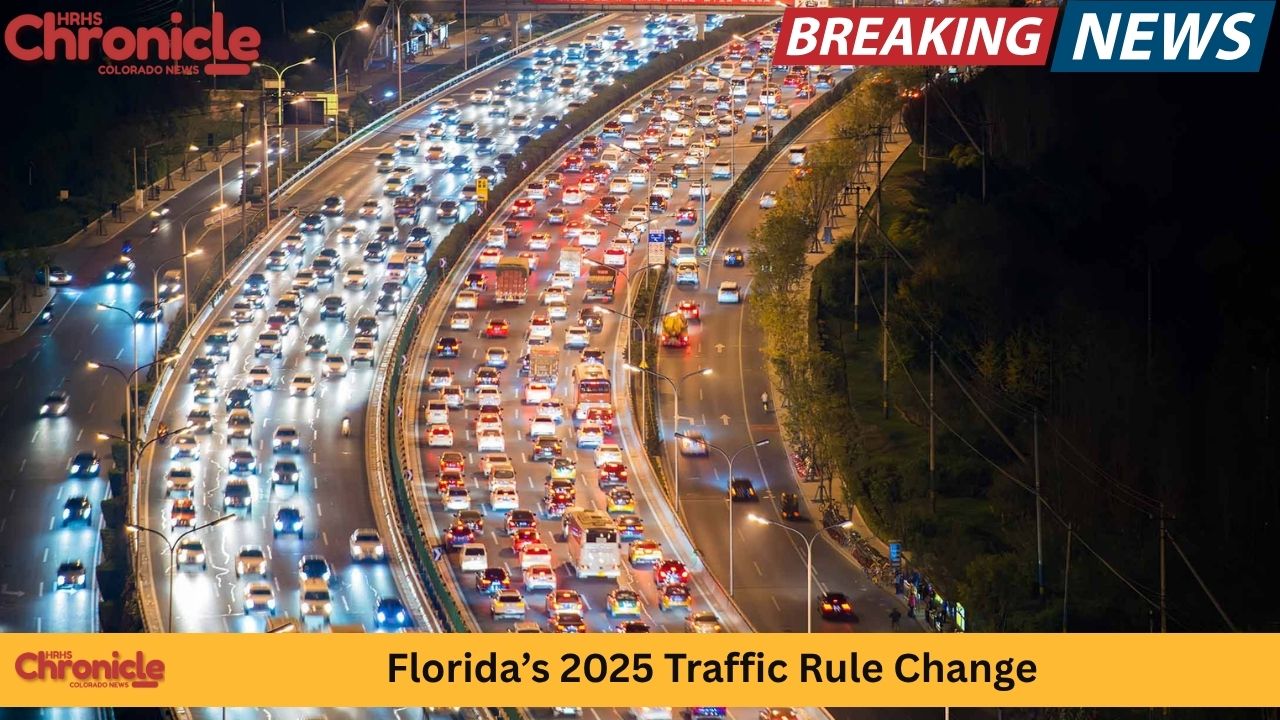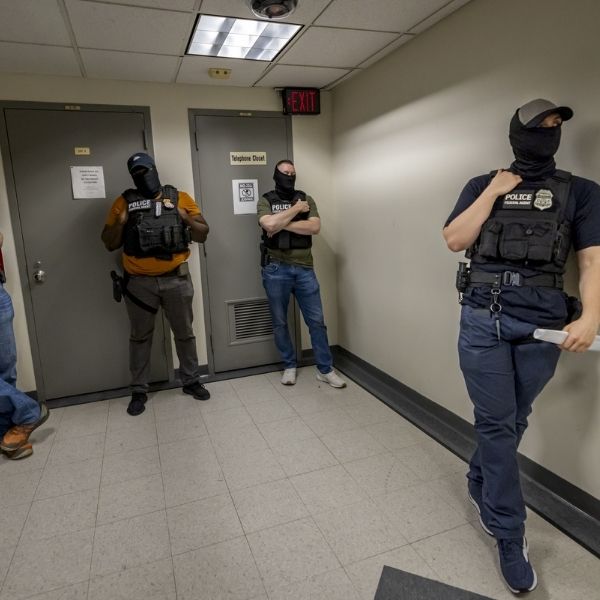In 2025, Florida drivers are once again urged to revisit the rules governing right turns on red—an everyday maneuver that often flies under the radar but significantly impacts traffic flow and safety. Whether you’re commuting through Miami, making lunchtime errands in Orlando, or traversing Tampa’s busy roadways, being versed in the updated right-turn-on-red (RTOR) guidelines is essential. This blog explores the renewed rule, its roots, regional variations, traffic statistics, and best practices cities across the Sunshine State are implementing.
Background and Rationale
Right turns on red have been legal throughout Florida for decades, aligning with federal energy conservation efforts from the 1970s. While the maneuver helps ease congestion and reduces idling, states began reevaluating RTOR after research in the early 1980s showed pedestrian crash increases—20–60 percent depending on the study. Over the last year, Florida observed rising incidents at urban intersections, prompting an official update in early 2025.
Statewide enforcement data shows that 1.2 million RTOR citations were issued in 2024, marking a 15% rise over 2023. Nearly one in six involved failure to yield to pedestrians, reflecting heightened hazards in dense urban corridors—particularly in neighborhoods like Wynwood in Miami and Downtown Orlando, where sidewalk and bike-lane activity is high.
Key Changes in 2025
Florida’s 2025 update introduces several changes:
-
Expanded red RIGHT‑arrow prohibition: Driving on a red arrow is no longer implicitly allowed. Unless signage, e.g., “Right Turn Permitted on Red Arrow After Stop,” is present, the arrow is treated as a no-turn indicator. This aligns Florida with states like California and Georgia in arrow-specific enforcement.
-
New signage requirements: Intersections with historic RTOR violations—such as parts of Jacksonville and St. Petersburg—are now mandated to feature clear “No Turn on Red” markers. Municipalities adopted standardized signage following FDOT guidelines released in January 2025.
-
Pedestrian-priority zones: Enhanced RTOR restrictions now apply near schools and senior activity centers in cities such as Gainesville and Tallahassee. Even without explicit signage, a right turn on red near high-traffic pedestrian zones may still be prohibited during active hours (e.g., 7–9 AM, 2–4 PM).
-
Enforcement enhancements: Florida Highway Patrol and local police are deploying new intersection cameras that detect rolling stops and high-violation corridors. Tampa reports a 30% decline in serious RTOR crashes since installing these cameras in mid‑2024.
How the Rule Works in Practice
General intersections
After stopping at the stop line (or crosswalk if no stop line exists), Florida drivers may turn right on red unless:
-
A solid red arrow is displayed;
-
A “No Turn on Red” sign is posted;
-
They fail to yield to pedestrians, bicyclists, or approaching traffic.
This remains consistent across cities—Miami, Fort Lauderdale, West Palm Beach, and Orlando all apply the same baseline.
Red right arrows
The 2025 update clarifies: a red right arrow equals “do not turn,” unless an accompanying sign explicitly permits it after stopping.
One‑way to one‑way left turns
Left turns on red when both streets are one-way still require a complete stop and yielding to traffic and pedestrians. This remains legal unless signage prohibits it.
School‑zone restrictions
Near schools, zig-zag crosswalk patterns like those in Pinellas County and Orange County now carry stricter RTOR rules during active times. A flashing beacon may indicate restricted right-turn, even without traditional signage.
City Spotlight Example: Orlando
Orlando’s downtown crossroads saw a 28% increase in RTOR-related fender-benders in 2023, attributed to tourists unfamiliar with rules. FDOT’s district office responded by installing five new camera-enforced intersections by end of 2024. Since then:
-
RTOR citations decreased by 22%;
-
Pedestrian in crosswalk-related incidents dropped 16%.
City officials published RTOR educational maps highlighting 12 caution zones and scheduled driver outreach at rental car kiosks to boost awareness.
City Spotlight Example: Miami
Miami-Dade’s campaign in neighborhoods such as Little Havana and Coconut Grove centers on pedestrian safety and RTOR compliance:
-
Over 400 intersections were audited in 2024; those with high pedestrian traffic received updated signage this year;
-
Multilingual educational materials were added to Miami International Airport’s rental car terminals;
-
The “Look Twice Before You Turn” campaign saw over 50,000 social media engagements since its February 2025 launch.
City Spotlight Example: Tampa Bay Region
Pasco, Pinellas, and Hillsborough counties enacted synchronized RTOR signs along key arterials like U.S. 19 and I‑275 exits. Here:
-
A mix of red arrows and traditional lights exists; many merge lanes feature overhead “No Turn on Red” signs;
-
A cross-county media campaign, “Stop, Look, Turn,” emphasizes stopping before turning, especially near beach‐goer pedestrian zones like Clearwater Beach and Indian Rocks Beach.
Traffic Statistics & Crash Data
Recent data paints a vivid picture:
-
In 2023, 3,400 RTOR‐related crashes were reported statewide; 12% resulted in injury, 1.5% in fatalities.
-
Nearly 35% of these occurred at intersections lacking proper signage or having ambiguous traffic signal configurations.
-
Urban vs rural split: 82% of incidents occurred in medium- to large-sized metro regions—Miami, Orlando, Jacksonville, Tampa accounted for over two-thirds of urban cases.
Since the 2025 update:
-
A 9% statewide drop in RTOR collisions is observable in Q1–Q2 2025 compared to the same period last year.
-
Counties with red-arrow enforcement and cameras (e.g., Orange, Hillsborough) saw reductions between 15–22%.
Common Questions Answered
What if I see a red arrow but no sign? Stop completely. Do not turn right unless a sign explicitly allows it.
Can I turn left on red from a one-way into another one-way? Yes—after a full stop and yielding. The 2025 update reinforces yielding requirements and signage in places like Gainesville’s downtown core.
What are fines for violating the rule? Uniform Traffic Citation penalties apply: $158 base plus court costs. If failure to yield caused an accident with injuries, penalties and liability rise sharply.
What about right turns near school zones? During active school hours, even absent signage, RTOR may be restricted. Pedestrian-priority systems like flashing lights signal to drivers that the rule is temporarily in effect.
Safety Tips for Drivers
-
Come to a complete stop before turning—rolling stops no longer pass enforcement scrutiny.
-
Scan all lanes, crosswalks, bike lanes—and actively look for pedestrians and bicyclists.
-
When facing a red arrow, only proceed if signage explicitly allows it.
-
Observe local signage in city centers—they often differ from rural intersections.
-
Follow school‑zone RTOR signals and treat them as strict no‑turn zones when active.
-
If confused, err on the side of caution—waiting for the green light is always safe and legal.
Municipal Outreach & Education
Florida cities and agencies have launched aggressive educational efforts in parallel:
-
Driver’s license materials: FDOT and the Department of Highway Safety updated online and in-print guides, highlighting rule changes and enforcement zones.
-
Rental car stations: Flyers and digital boards at Orlando and Miami airports display RTOR reminders.
-
Targeted outreach: Pop‑ups in areas like Jacksonville’s Riverside and St. Petersburg’s downtown inform drivers of new red-arrow regulations.
-
Schools & community programs: Tallahassee’s Safe Routes to School program hosted demonstration events at middle‑ and high‑schools to teach safe turning habits.
Pedestrian & Cyclist Perspectives
Flawed or rushed RTOR can endanger vulnerable road users. Studies show:
-
Cities that adopted RTOR arrow restrictions experienced 30–45% fewer pedestrian-involved crashes.
-
Hillsborough County’s bike-crash study revealed 60% of serious RTOR crashes occurred when drivers failed to observe bike lanes adjacent to right-turn paths.
-
In Miami, RTOR-related pedestrian injuries dropped 12% in Coconut Grove after intersection redesigns and updated signage in early 2025.
Municipal planners are increasingly implementing physical safety measures—such as split turn lanes, refuge islands, and dedicated arrows—to complement the 2025 rule update.
Future Developments & Technology Integration
The 2025 update is not the final step. Future enhancements may include:
-
Variable RTOR signals: Airports and major event zones (e.g., Miami‐Dade around Marlins Stadium) might receive RTOR-enabled traffic signals that adjust dynamically based on pedestrian volume.
-
Real‑time sign alerts: Apps like FL511 aim to integrate RTOR signage status for high-violation intersections into user alerts.
-
Expanded camera enforcement: FDOT plans to roll out at least 50 new RTOR‐specific camera locations across metro Florida by mid‑2026, focusing on collision hotspots.
-
Smart‑city infrastructure: Orlando, Tampa, and Miami are piloting vehicle-to-infrastructure (V2I) communication. In the future, vehicles may get in‑car alerts when turning on red is prohibited.
Comparisons with Other States
Florida’s 2025 move brings it closer to peer states with strong urban pedestrian safety frameworks:
-
In California, red‑arrow turns are banned unless signs explicitly allow them—similar to Florida’s new model.
-
New York City bans right‑on‑red completely, citing pedestrian safety.
-
DC implemented its own RTOR ban starting January 1, 2025. The new Florida rule is more moderate, targeting high-violation areas without a blanket ban.
National studies show turning on red enhances intersection throughput by 5–10%, but at the cost of increased pedestrian risk. Florida’s path seeks balance—allowing RTOR where safe, yet enforcing in vulnerable intersections.
How Residents Can Stay Compliant
-
Check intersection signage: Look up intersection guides, e.g., Jacksonville-Duval intersection maps will show updated arrow rules.
-
Use navigation tools: Ride-sharing apps may soon update turn‑on‑red directions with context-aware prompts.
-
Report unclear signage: Local FDOT or Safe Streets contact lines encourage drivers to report confusing intersections.
-
Stay informed: Follow FDOT news releases and local traffic alerts for new camera deployments or signage changes.
Conclusion
Florida’s 2025 RTOR update is part of a broader commitment to safer, smarter roads. The refined rules—especially around red arrows, signage consistency, and pedestrian zones—mark a significant milestone. While the changes may require a mental shift at intersections, especially in cities like Miami, Orlando, and Tampa Bay, the long-term benefits are clear: fewer collisions, streamlined flow, and enhanced safety for those who walk, bike, or drive.
By knowing the law, pausing fully, yielding deliberately, and treating new signals with respect—Florida drivers can contribute to a less chaotic and more secure road environment.
Final Takeaway
Understanding and abiding by the updated RTOR rule is more than just avoiding a ticket—it’s about protecting lives. As cities implement modern traffic infrastructure and enforcement, your awareness and care make every right turn on red a safer one.
















Leave a Reply